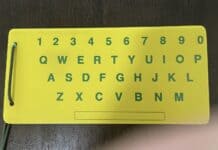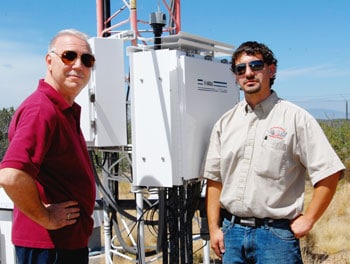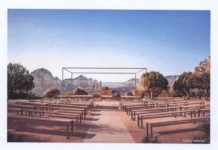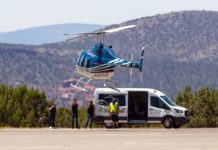Anyone who’s ever tried to look up Sedona’s weather on the National Weather Service Web site knows how frustrating it is to get the temperature and conditions from Flagstaff’s Pulliam Airport instead.
Though it’s only 24 miles up Oak Creek Canyon, Pulliam is 3,000 feet higher and its weather never accurately reflects what’s going on in the red rocks.
Differences of 20 degrees at night are not unusual and daytime differences are always 10-15 degrees between the two locations.
Even worse, Flagstaff can be suffering a blizzard with winds over 60 mph howling through its peaks and through its forests while the neighboring city to the southwest has sunny skies and temperatures warm enough for a game of tennis.
The trouble was, lacking its own automated weather observing system, the Sedona Airport never before officially existed for weather reporting entities like The Weather Channel, Weather Bug and AccuWeather which were forced to interpolate data from airports in Flagstaff and Prescott.
Thanks to the efforts of Mac McCall, manager of the Sedona Airport, who applied for a $150,000 grant from the Arizona Department of Transportation-Aeronautics, that situation has changed.
Certified by the Federal Aviation Authority, the newly-installed Vaisala sensor array was installed on the east side of the runway earlier this year.
“The lack of real-time weather data has been a problem for us and for pilots for many years,” McCall said. “This new equipment is a boon for the Sedona Chamber of Commerce and for the aeronautical community.”
After a short drive across the landing strip, Jason Mudge, who works for the airport and also serves as the technician for the weather station, showed off his new equipment.
“Reports are generated every minute on altimeter settings, temperature, dew point, wind speed, wind direction, cloud height, sky conditions, present weather including rain, snow, drizzle, precipitation intensity, fog, haze and thunderstorm detection,” he said.
The data is transmitted via satellite to Vaisala’s operations in Minneapolis, where it’s repackaged and distributed worldwide through the weather service.
Inside the terminal building, Mudge and other airport personnel can monitor the reports on flat panels and the data are available to incoming and outgoing pilots via digitized voice transmissions or by telephone for flight planning.
While pilots had the benefit of the reports shortly after the installation was complete, it’s taken several weeks to get all of the weather reporting entities on board, according to Al Comello who provides public relations for the airport through his firm, Comello Media Services.
Comello had to coax local and national weather reporting entities to give up their old feeds from Flagstaff and Prescott.
“This puts Sedona on the map,” Comello said. “It provides critical data to pilots who are making decisions on where to land.”
In addition, Comello said it will help potential visitors
from Phoenix and other locations who want to know what the
actual temperatures are in Sedona.
“From a tourism point of view, it’s helpful for them to know what to bring so they’re properly prepared for the weather here,” Comello said. “That means in the winter, they’ll see that it’s 30 rather than single digits and in the hottest part of the summer that it’s 100, not 85.”
To hear the newly-available aeronautical weather transmissions by telephone, call (928) 282-1993.
Susan Johnson can be reached at 282-7795, ext. 129, or e-mail sjohnson@larsonnewspapers.com






















